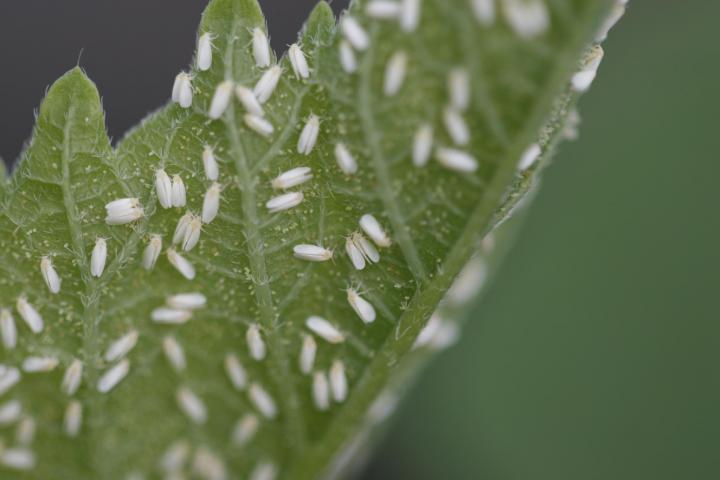
Natural Ways to Prevent Whitefly Infestations
The Almanac Garden Planner - Use It Free for 7 Days!
Plan your 2025 garden with our award-winning Garden Planner.
ADVERTISEMENT
I've had trouble with white fly infestations in my yard for decades. I've tried Bifen with little success, they come back too soon. Being a cigar smoker, I started saving my cigar butts. I shred them and spread them on the grass after mowing. I do this every other week and haven't seen a white fly since I started.
I discovered whitefly larvae buries in the soil of one of my raised beds, despite the fact that there are no plants currently growing in it. I am at a lost as to how to remedy the situation as they are not attached to any plant but down in the soil. Any suggestions?
Cinnamon Powder and red chillies powder equal amounts mix within the soil bed and then water it freely after 24 hours, PROVIDED THERE IS NO PLANTATION IN THE SOIL BED.
Hi Ashlee, Since whiteflies at all stages of life need plant material to feed, it is unlikely that what you found in the soil of your raised garden bed is whitefly larvae. You could use this link (https://entomology.ca.uky.edu/ef017) for recognizing insect larvae that may help in identifying what you found. Hope this helps!
Thanks for the info on getting rid of whiteflies, will certainly give it a try. Don’t know where the came from, I am in a high rise condo and they appeared on Morning Glory plants I started from seed.
Murphys soap oil works well.Im in the plant industry!
Castile soap is the soap to use - it is vegetable-based, chemical-free, with no synthetic ingredients or animal fat. Originally made from pure olive oil in Castile, 12th century Spain. Today, it may contain other plant-based oils such as almond, avocado, coconut, hemp, walnut. It worked for us in a commercial greenhouse in Australia. In a big area like that, the white flies do come back, so it needs to be repeated.
How much of the soap do you use per 1 gallon of water?
Hi, I am having the most difficult problem with a horrible infestation of white flies on my crepe myrtles. They are to large for me to reach from the mid to the top of the trees. There are two of them. I have applied neem oil and the organic soap I bought online. I've tried dawn mixed with water and even granules from a pest control company. I'm so frustrated I want to cut the trees below the leaves but I really love them. I'm not sure what to do! We've had hummingbirds and tons of dragonflies also but nothing is helping. Please help! Thank you!
I find that whenever a plant is suffering it is also a poor soil health problem. If they have been growing there for quite some time, they will benefit by an application of good soil like compost etc. and some nutrients, and check for the pH needs of the plant you are working with to see if it needs an application of lime or something like that. The tree will benefit greatly by getting stronger and more able to fight the pests that invade it.











